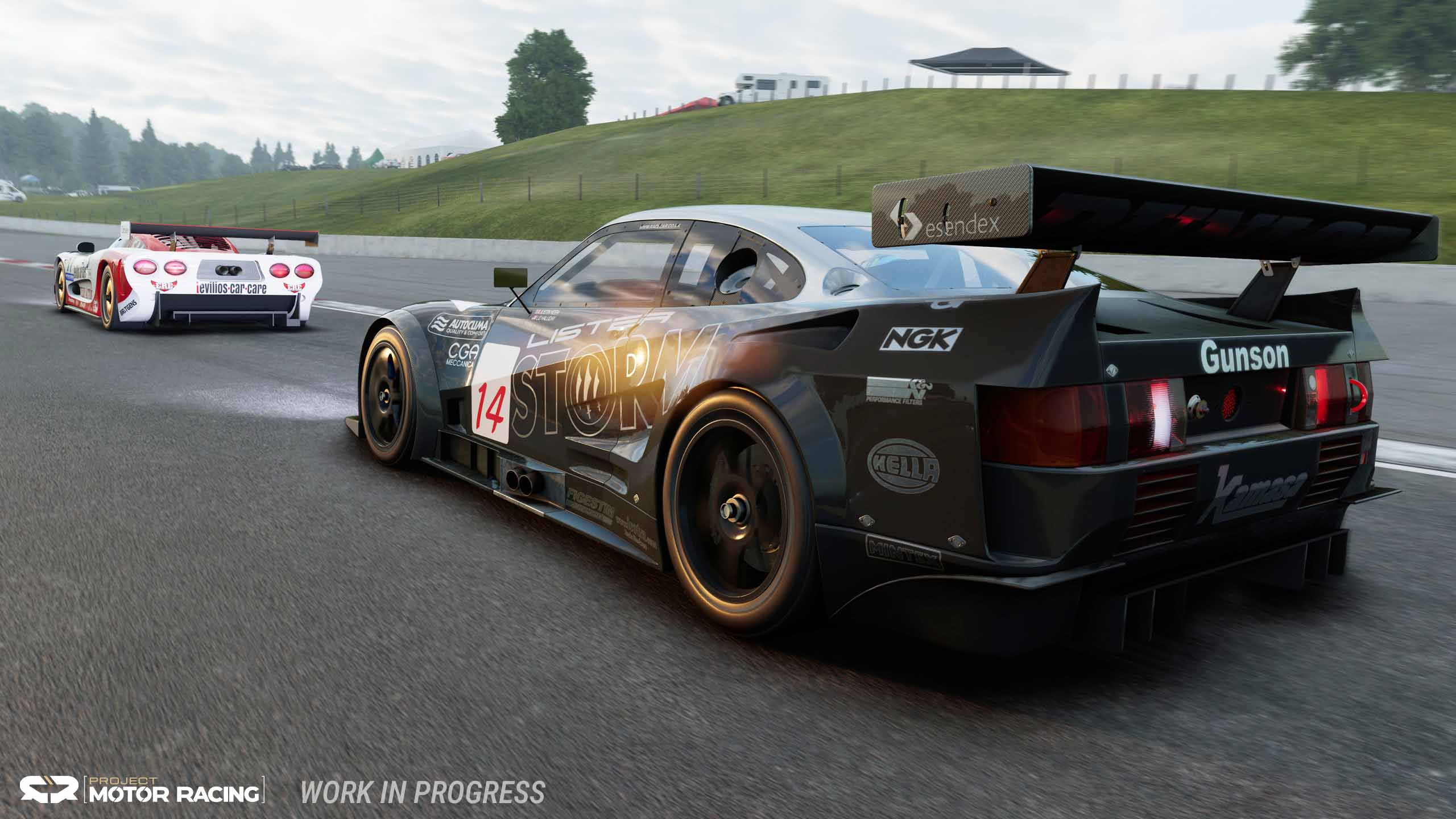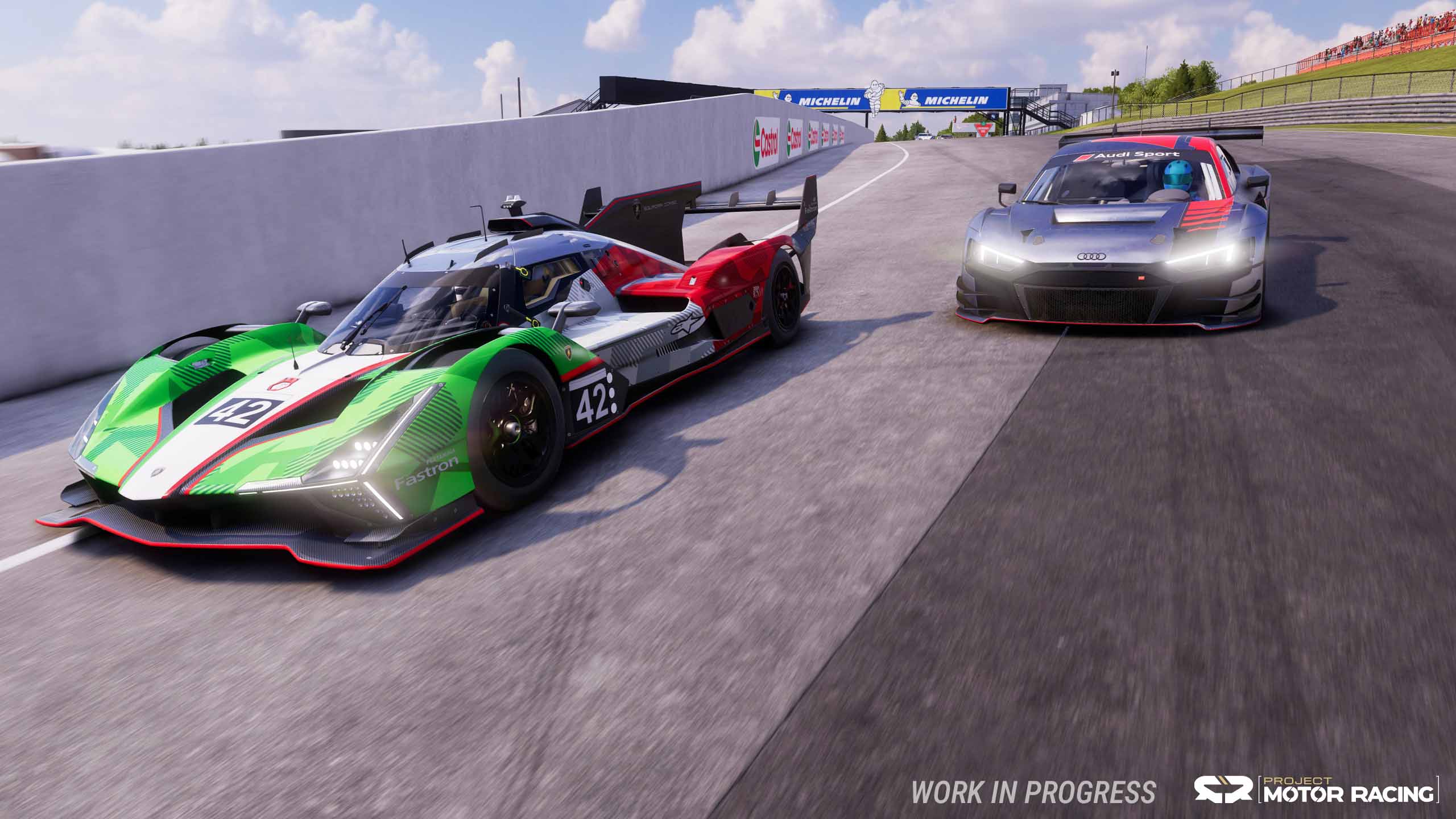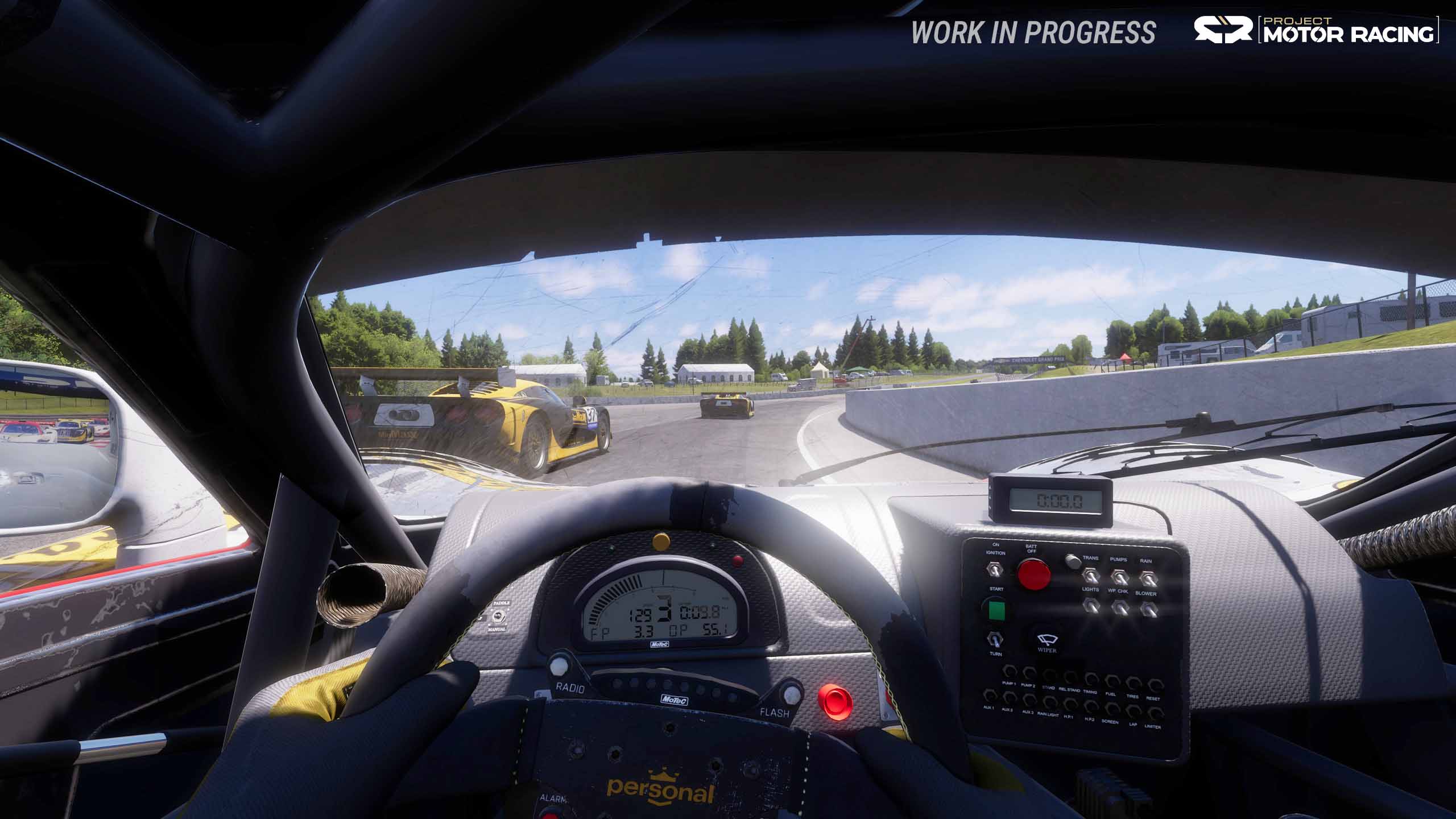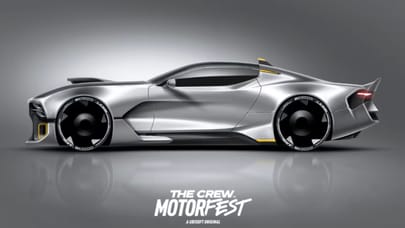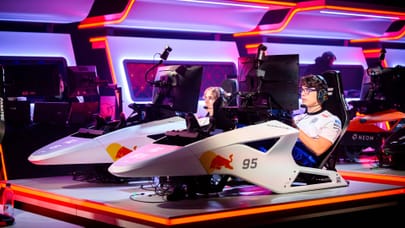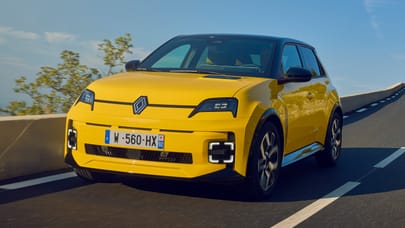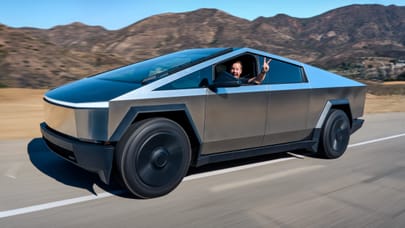
Remember Project CARS and NFS: Shift? We’ve got good news about Project Motor Racing
The upcoming rigorous racing sim made by former Slightly Mad and Simbin devs feels like the evolution of a special lineage
Welcome to the summit of mount Trivial Complaints, where we’re currently sucking at our oxygen supplies in an attempt to acclimate with this truism: by the end of 2025, we might have too many good racing sims.
Project Motor Racing, which you could be forgiven for blanking on because it’s changed names more often than Red Bull’s second driver, joins a mounting force of titles that are physically accurate, licensed to the hilt, and very convincing to drive. But what might distinguish this particular sim from, say, Rennsport, Le Mans Ultimate, GT7 and Assetto Corsa Evo is – well, the same thing we loved about its elder ancestor, Project CARS 2. But we’ll get to that in a moment. For now, let’s cover the fundamentals.
Previously known as GTRevival, the project initially leaned into the idea of creating a sandbox for different eras of GT racing. Since there are alumni on the team who worked on the revered Simbin GTR series, that made a lot of sense, and was itself rather exciting.
As the scope’s broadened, so has the name. Its current nomenclature gives the impression that in the long term, this will be a platform that’ll house all kinds of racing.
But in the present, at the Racing Unleashed lounge in Zurich, where numerous pricey F1-style simulator rigs have been loaded up with the latest build, the focus is on the physics engine. As we spend the afternoon stress-testing it with ambitious corner entry speeds and creative lines across curbs, it’s clear the physical simulation is something developer Straight4 Studios is clearly very proud of.
A new open topology multi-body vehicle solver. A piecewise aerodynamics model. Internal combustion engine and turbo-charger models using a one-dimensional compressible fluid dynamic simulation: just some of the physics engine features that mean nothing to us. But they all sound quite impressive, and if they all contribute to how it feels to drive, we’re happy to nod along.
So, how does it feel to drive? Truthfully, quite frightening.
That’s partly down to the choice of cars in this preview build: an Audi R8 LMP900, one of the most dominant Le Mans cars in the competition’s history, and a car with all the electronic sophistication and compliance of a charging stallion. The 1970 Lola T70 Mk3B GT, whose 5.0-litre V8 engine put down the power in such a way that one could only drift around the corners with pursed lips and crossed fingers, and – thank goodness – a Lamborghini Huracan GT3 Evo 2, just to show that Project Motorsport can also replicate cars with ABS, traction control and electronic assists as well.
But there’s also an immediacy and articulation to the handling that really conveys a sense of hurtling at high speed along the straights, all the shifts in weight and snaps of traction loss on corner exits, and above all, how angry these cars seem at you for demanding that they go around the track as instructed.
The tracks in question, Lime Rock Park and Motorsport Park, are both high-speed, short circuits, deceptively technical and, particularly when you’re piloting an analog era prototype car, prone to coaxing you into their inviting curves with way too much speed like a siren luring sailors to their demise.
Top Gear
Newsletter
Thank you for subscribing to our newsletter. Look out for your regular round-up of news, reviews and offers in your inbox.
Get all the latest news, reviews and exclusives, direct to your inbox.
We’ll need to log the hours in our familiar sim racing setups at home before we can pass judgment definitively on the driving experience, since Racing Unleashed’s luxurious and exotic rigs aren’t much like our daily drivers. But what’s immediately clear is that there’s a lot of complex and impressive simulation going on here. (Must be the open topology multi-body vehicle solver, we reckon.)
It feels faintly recognisable as the latest in Project CARS and GTR’s revered lineage, because of that grounded, detailed behaviour. It also feels broadly comparable to the likes of ACC and iRacing - at least, when comparing like-for-like GT3 cars.
That brings us back to an earlier point. We’re spoiled by the sheer number of quality racing sims at present, so Project Motor Racing will need more than just great physics (check, so far) and a strong list of cars and tracks (also check - there’s a Lister Storm!) in order to compete.
Straight4 knows this, of course, as a veteran of the genre. That’s why it’s implementing the ‘Factory Driver Program’ where a community of racers can work with the devs to collaborate on the direction of development. There’s something to be said for auteuring a project, of course, but consulting with a committee of the most passionate and expert users just makes sense.
Then there’s the sandbox element. What made Project CARS 2 so special was the set of tools it gave you to make online races, with or without AI opponents, with full control over the night-day cycle, four different weather slots, mandatory pit stops, flag rules and multi-class events. There’s still not a like-for-like title that offers quite as much granularity in this regard… until Project Motor Racing arrives.
Its developers say there’ll be just as much tweaking and more, and to our eye that’s just as important to the sim’s chances of holding an audience long-term as the one-dimensional compressible fluid dynamic simulation.




